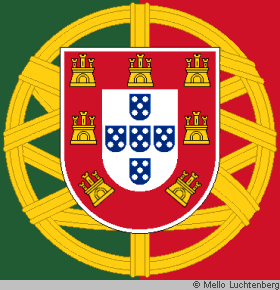The war to start all wars
Sweden, under the briliant leadership of Gustav II Adolf, was slowly rising to the place it rightly deserved, as one of the powers of Europe.
Under his leadership, peace with Brandenburg was accomplished, Denmark was absorbed, and Poland had been converted to the true faith.
Now, his days were coming to a close. Austrian agitators were spreading through Germany, while Portuguese embargoes reached Stockholm several times.
Forced to chose a position, his final acts were to entirely ignore the Austrian threat, knowing full well that the Brandenburgers were well capable of dealing with them, especially as Austria was tied up fighting the French.
The situation with Portugal was also dealt with, resulting in a temporary lifting of the embargo, after which Sweden promised to trade nicely and not break Portuguese dominance in their trading centers.
However, the Austrian-French war did not last, as indeed the French were caught at unawares and beaten to a bloody pulp, resulting in the return of Flandern to Habsburg control. Afterwards, tensions between Brandenburg and Austria flared, while Gustav breathed his dieing breath.
The new queen had a regent appointed, one of the most able men in all Sweden, even if many nobles despised the action and agitated for their own candidate.
As the years passed, war in Germany seemed to be at hand, as Brandenburg and Austria amassed vast armies. The wily Austrians took the world by surprise when, in conjunction with the other Habsburg realms, they invaded the Kingdom of England, most notably in the lands of the shortly independent Dutch republic.
This maneuver greatly upset Sweden, as a resurgent Habsburg alliance could threaten protestantism in all the world, and a beaten England would be risky, at best, for the Swedish crown.
Luckily, the Brandenburger lords were equally upset by the maneuver, and the vast armies amassed during the previous arms race marched into Bohemia and the Rhine provinces.
Austria was thus in a tricky situation, and only barely managed to stem the tide while withdrawing nearly all it's troops from the lowlands.
This, however, still left England to fight Spain and Portugal, and the Swedish government looked on in horror as the Spanish Tercios marched halfway from Mexico to the Scandinavian colonies in Canada.
There were good sides to the situation too, though. Portugal had been one of the strongest trading powers, and England, Brandenburg and Spain all sported large complements of traders. With their economies crumbling from war, Swedish, and Ottoman, traders jumped in to fill the gaps that inevitably showed up.
On one such mission, however, a few overeager Swedish merchants established such a strong position in southern Chinese trade, that Portugal again embargoed Sweden.
The shipyard of Sjaelland worked overtime to rapidly build a Swedish fleet capable of sailing to the capital of the weakening Portuguese state, and when it was finished only slight pressure was necessary to achieve the end of the embargo, allthough Sweden took the lesson of not trading too strongly in tradecenters occupied by other European powers at heart.
However, shortly after this strange events occured along the Swedish-Russian border. Russian troops marched over the border without a declaration of war ever reaching queen Kristina, and after messengers reached the Tsar it became clear that he, too, never wanted a war. As such, the war can be expected to be ended shortly.





